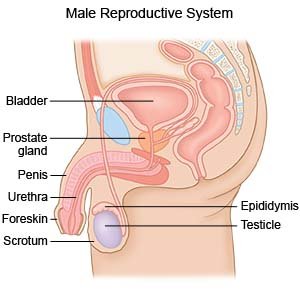Robot Assisted Laparoscopic Prostatectomy
Medically reviewed by Drugs.com. Last updated on Aug 4, 2025.
What do I need to know about robot-assisted laparoscopic prostatectomy (RALP)?
RALP is surgery to remove your prostate gland through small incisions in your abdomen. RALP is done with a machine that is controlled by your surgeon. The machine has mechanical arms that use small tools to remove your prostate.
 |
How do I prepare for RALP?
- Your surgeon will tell you how to prepare. Tell him or her about any other surgeries or cancer treatments you had. Tell him or her if you have had bleeding problems.
- Tell your surgeon about all medicines you currently take. He or she will tell you if you need to stop any medicine before surgery, and when to stop.
- Tell your surgeon about any allergies you have. Include allergic reactions to medicine, antibiotics, or anesthesia. You may need to take antibiotic medicine to help prevent an infection caused by bacteria. You may get antibiotic medicine before and after your surgery.
- Arrange to have someone drive you home after surgery and stay with you for 24 hours.
- You may need to have tests done before surgery, such as blood tests or a chest x-ray.
- You may have to stop eating solid food for up to 2 days before your surgery. You can drink water, broth, apple juice, or lemon-lime soft drinks. You may also suck on ice chips or eat gelatin. You may be given medicine to drink or an enema to clean out your bowel.
Related medications
What will happen during RALP?
- A urinary catheter will be put into your bladder to drain your urine. The robotic arms place a laparoscope and other tools inside your abdomen through small cuts. A laparoscope is a long, thin tube with a light and camera on the end. A gas called carbon dioxide is pumped into your abdomen to inflate it. This gives your surgeon room so he or she can see your prostate better.
- Your surgeon will use the camera to see inside your abdomen. He or she will guide the robotic arms to remove the prostate. The prostate will be removed through one of the small incisions in your abdomen. Lymph nodes may also be removed. Your surgeon will use the robotic arms to stitch your incisions closed.
What should I expect after RALP?
- Drains (thin rubber tubes) may be used to drain fluid from around your incision. The drains will be taken out when the surgery area stops draining.
- A Foley catheter is a thin tube inserted through your urethra and moved into your bladder. The catheter is used to drain urine into a bag. Healthcare providers will remove the catheter when you no longer need it.
What are the risks of RALP?
- You may bleed more than expected or get an infection. Your bladder, ureters (tubes that drain urine from your body), intestines, or rectum could be damaged during surgery. After RALP, you may have problems urinating or having bowel movements. You may need more surgery to treat urination problems. You may not be able to have an erection after surgery. Your stitches may come apart. You may have a hernia or develop an abscess (deep infection).
- You may get a blood clot in your arm or leg. The clot may travel to your heart or brain and cause life-threatening problems, such as a heart attack or stroke. Even with surgery, cancer may come back.
Care Agreement
You have the right to help plan your care. Learn about your health condition and how it may be treated. Discuss treatment options with your healthcare providers to decide what care you want to receive. You always have the right to refuse treatment. The above information is an educational aid only. It is not intended as medical advice for individual conditions or treatments. Talk to your doctor, nurse or pharmacist before following any medical regimen to see if it is safe and effective for you.© Copyright Merative 2025 Information is for End User's use only and may not be sold, redistributed or otherwise used for commercial purposes.
Further information
Always consult your healthcare provider to ensure the information displayed on this page applies to your personal circumstances.
